
Epaulette is a type of ornamental shoulder piece or decoration used as insignia of rank by armed forces and other organizations. Flexible metal epaulettes are referred to as shoulder scales.
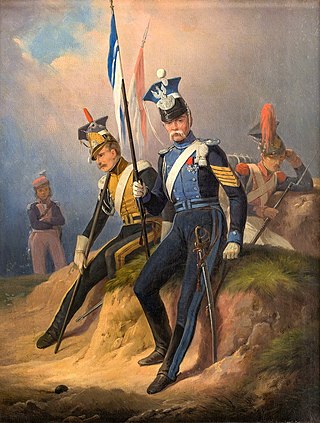
Uhlan is a type of light cavalry, primarily armed with a lance. The uhlans started as Lithuanian irregular cavalry, that were later also adopted by other countries during the 18th century, including Poland, France, Russia, Prussia, Saxony, and Austria-Hungary. The term "lancer" was often used interchangeably with "uhlan"; the lancer regiments later formed for the British Army were directly inspired by the uhlans of other armies.

A military uniform is a standardised dress worn by members of the armed forces and paramilitaries of various nations.

Baikal Cossacks were Cossacks of the Transbaikal Cossack Host ; a Cossack host formed in 1851 in the areas beyond Lake Baikal.
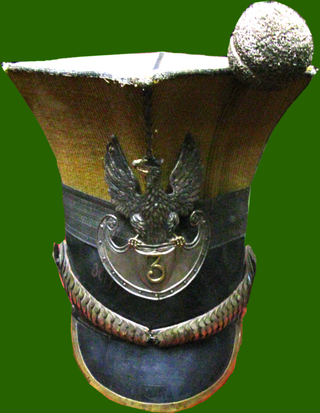
Czapka is a Polish, Belarusian, and Russian generic word for a cap. However, it is perhaps best known to English speakers as a word for the 19th-century Polish cavalry headgear, consisting of a high, four-pointed cap with regimental insignia on the front to which feathers or rosettes were sometimes added.
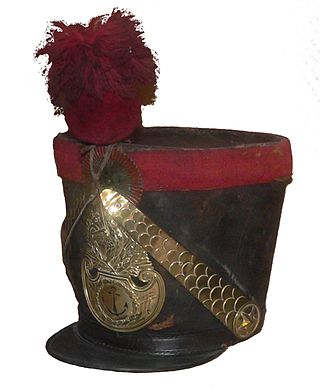
A shako is a tall, cylindrical military cap, usually with a visor, and sometimes tapered at the top. It is usually adorned with an ornamental plate or badge on the front, metallic or otherwise; and often has a feather, hackle, or pompom attached at the top.

An aiguillette, also spelled aguillette, aiglet or aglet, is a cord with metal tips or lace tags, or the decorative tip itself.

Feldgrau is a green–grey color. It was the official basic color of military uniforms of the German armed forces from the early 20th century until 1945 or 1989. Armed forces of other countries also used various shades of that color. Feldgrau was used to refer to the color of uniforms of the armies of Germany, first the Imperial German Army and later the Heer of the Reichswehr and the Wehrmacht.

Full dress uniform, also known as a ceremonial dress uniform or parade dress uniform, is the most formal type of uniforms used by military, police, fire and other public uniformed services for official parades, ceremonies, and receptions, including private ones such as marriages and funerals. Full dress uniforms typically include full-size orders and medals insignia. Styles tend to originate from 19th century uniforms, although the 20th century saw the adoption of mess dress-styled full-dress uniforms. Designs may depend on regiment or service branch. In Western dress codes, full dress uniform is a permitted supplementary alternative equivalent to the civilian white tie for evening wear or morning dress for day wear – sometimes collectively called full dress – although military uniforms are the same for day and evening wear. As such, full dress uniform is the most formal uniform, followed by the mess dress uniform.
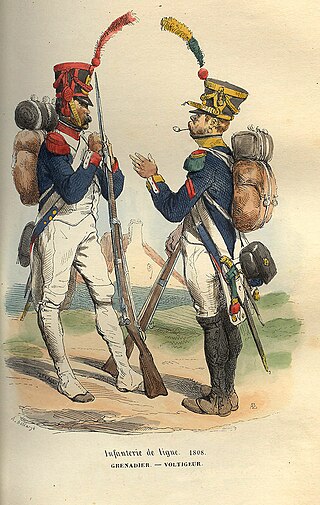
A facing colour, also known as facings, is a common tailoring technique for European military uniforms where the visible inside lining of a standard military jacket, coat or tunic is of a different colour to that of the garment itself. The jacket lining evolved to be of different coloured material, then of specific hues. Accordingly, when the material was turned back on itself: the cuffs, lapels and tails of the jacket exposed the contrasting colours of the lining or facings, enabling ready visual distinction of different units: regiments, divisions or battalions each with their own specific and prominent colours. The use of distinctive facings for individual regiments was at its most popular in 18th century armies, but standardisation within infantry branches became more common during and after the Napoleonic Wars.

A full plaid, or just a plaid, is a long piece of tartan fabric, most often worn as part of a Highland dress. It usually matches the tartan of the kilt. A modern full plaid is pleated the whole way, with half of its length sewn shut. Its length is about twice the distance from the ground to the wearer's shoulder.

Service Dress is the style of khaki service dress uniform introduced by the British Army for use in the field from the early 1900s, following the experiences of a number of imperial wars and conflicts, including the Second Boer War. This variant of uniform continues to be worn today, although only in a formal role, as No. 2 Pattern dress.

Siberian Cossacks were Cossacks who settled in the Siberian region of Russia from the end of the 16th century, following Yermak Timofeyevich's conquest of Siberia. In early periods, practically the whole Russian population in Siberia, especially the serving-men, were called Cossacks, but only in the loose sense of being neither land-owners nor peasants. Most of these people came from northwest Russia and had little connection to the Don Cossacks or Zaporozhian Cossacks.
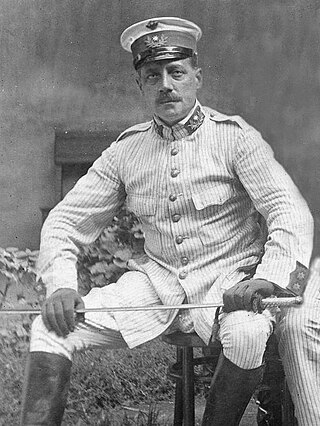
Rayadillo is a blue-and-white striped cotton or flannel material that was used to make the military uniforms worn by Spanish colonial soldiers from the mid 19th century until the early 20th century. It was commonly worn by soldiers posted in overseas Spanish tropical colonies and later, Spanish Morocco and Spanish Guinea.
The military uniforms of the Union Army in the American Civil War were widely varied and, due to limitations on supply of wool and other materials, based on availability and cost of materials. The ideal uniform was prescribed as a dark blue coat with lighter pants, with a black hat. Officer's ranks were denoted with increasing levels of golden decoration. Specific jobs, companies, and units had markedly different styles at times, often following European customs such as that of the Zouaves. Officers uniforms tended to be highly customized and would stray from Army standard. Ironically, several main pieces of gear had been created by order of the U.S. War Secretary Jefferson Davis before the war; he later became Confederate President.
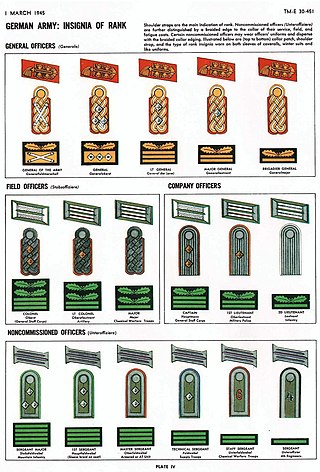
The Heer as the German army and part of the Wehrmacht inherited its uniforms and rank structure from the Reichsheer of the Weimar Republic (1921–1935). There were few alterations and adjustments made as the army grew from a limited peacetime defense force of 100,000 men to a war-fighting force of several million men.
A formation patch or formation badge is a military insignia that identifies a soldier's military formations. Originally developed during the 20th century for battlefield identification, it has persisted into the 21st century as an element of military heraldry.

In military uniforms, a shoulder belt is a wide belt worn usually over the shoulder and across the body. With nearly all line infantry, skirmishers, light infantry, grenadiers and guard regiments, two shoulder belts were worn - one carrying the cartridge box, and another for the bayonet, a sword, or other military equipment.
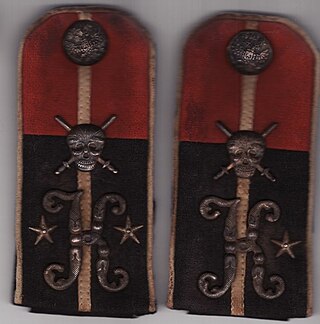
Military ranks and insignia of the White Movement (1918-1922) were based on the former Ranks and insignia of the Imperial Russian Armed Forces. However, there were new features and modifications compared to the old system:
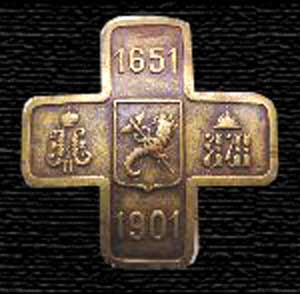
The 4th Kharkov Uhlan Regiment was a cavalry regiment of the Imperial Russian Army formed in 1651 in Kharkiv, Tsardom of Russia, and served as a Kharkiv Regiment garrisoned in Chyhyryn (1820) and Białystok (1913).






















